When it comes to wooden fences, we don't worry too much about them, considering them less important than furniture or a house. It seems that they can be made with any kind of wood, that we can paint them with what is left over from other projects. But if you want to fence in a plot of land and you want the fence to look good, when you do the math you discover a cost that is not to be neglected. That's why it's good to make it as durable and as well-protected as possible, and the following tips can help.
Why protection? How it was done in the past
Fences are the most exposed outdoor constructions. Houses and cottages are roofed, furniture can be put up, the terrace is covered too, whereas fences are directly in the way of the weather. Plus, they can be attacked by insects, get diseases like blue mould or rot.
In the past, some fences were made of woven wire. The walnuts were not stripped of their bark and this protected them. When they made fences out of planks they used to burn gently. The slightly charred layer on top was a very good protection. It wasn't advanced charring like that done by Japanese method Shou Sugi Ban. The burn was shallow and stained the wood beautifully.
Oil or tar was used for the protection of plank fences. Painting the fence with burnt engine oil was common. The tar was "melted" in gas and the resulting solution was used to paint the fence. It provided good protection against moisture.
They used to varnish fences, as well as trees. The glass protected against insects and UV radiation. It was washed away by the rains, but refreshed every summer.
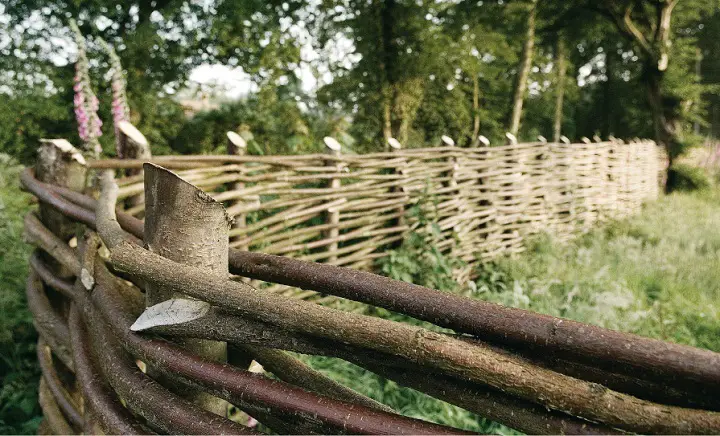
What wood to choose for the fence
But let's go back to the present day and see how to make a fence last longer. There are 3 things to keep in mind when building a fence:
- choice of wood
- construction method
- wood protection
The choice of wood is based on several criteria. In addition to aesthetics, durability and resistance to rot should be considered. Because of dampness, fences can rot when they come into contact with the ground. This area is the most exposed, even more so than the ground, because oxidation from the air and solar radiation is involved. That's why the best wood for fencing is also used in construction.
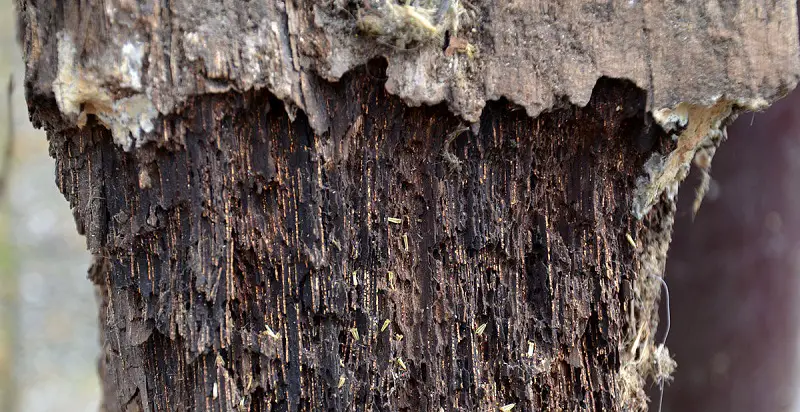
The wood with the best resistance to rotting is tannic and naturally oily. Our wood that meets these qualities isacaciauland is used for fence support posts, those that are driven into the ground. Oak It is also very resistant, but used less often for fencing because it is a precious wood that grows slowly and is used mainly for furniture, but also for doors and windows.
Acacia, although very hard, grows quickly and is much used as a building material for strength structures. Combinations are often made, using acacia poles and planks of other, lighter and less resistant species.
The most commonly used wood for fencing, however, is resinous - spruce, fir, pine. It is durable and available wood, and the resin content helps a lot in its durability. Pre-treated wood is also available, with protection provided by impregnation treatments. It is much more resistant to weathering and insect attack, but also much more expensive.
What to bear in mind when building
As I said, the biggest problem is rot. The wood practically grinds itself up on contact with the ground and ends up being knocked down by the wind or falling under its own weight. That's why, in addition to using tannin wood, water drainage and protection of the buried portion must be ensured.
Drainage is ensured if gravel and sand are put in the pit and only then filled with earth. If the gravel is 'bound' with cement instead of earth, the resistance is greatly increased.
Around the post the ground must be well tamped and loaded so that it is higher than it is around. The water will run off and so the post will be protected.
There are also protective foils that can be placed around the pole in the area that is in the ground. The foil should also stay on the outside to provide protection when in contact with the ground, where the risk of rot is greatest.
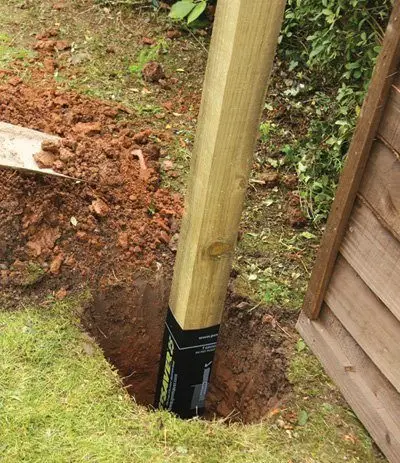
Materials and modes of protection
Like any wood that sits outside, fences need to be protected. There are lots of products that can be used: varnishes, paints, lacquers, impregnants, waxes, oils. Whichever product you decide to use, it must be specifically for wood exposed to the outdoors to ensure the necessary protection. Unprotected wood changes colour over time (due to UV radiation) to grey, and resinous wood is the fastest to change colour (colour change starts immediately after cutting). In order to keep its colour, it must be covered with materials containing UV protectants.

When it comes to insect protection, you should be aware that these products are not as easy to find now as in the past. There used to be complex products, a kind of 3-in-1, which were insect repellents, weather and UV protection and colour. Because of EC requirements for hazardous products - biocides - many manufacturers have stopped producing such materials and have limited themselves to colouring and UV and weather protection. Specialist shops sell insect fungicide products that can be used to treat wood before any other type of protection.
But you can buy the wood ready treated against insects. In the past it was recognised by its greenish-blue colour. In the meantime, the product that gave it that colour has been banned (copper cobalt arsenate CCA) and now treated wood is only slightly darker than untreated wood.
Recommendations for materials used
And we've come to weatherproofing. My recommendation is to use non filming products, i.e. oil, oil based varnishes or wax based varnishes (impregnants), even if you are told that varnishes and paints last longer.
The fence stands all day in the sun, rain, snow, wind and whatever else it has to endure. As you know wood varies in size depending on the humidity outside. If it is covered with a film, it is possible that movement will cause the film to crack. At that point the protection ceases and water gets under the film, causing it to flake off. The appearance will become increasingly ugly and you will definitely want to refinish. To restore it, you will have to remove any remaining traces of varnish or paint.
If you apply oils or waxes, they do not film. They go deep into the wood and protect it. What's left on the surface will wash off in rainy weather, but it won't look ugly, like peeling lacquer. Plus, the protection inside the wood remains. The finish can be refreshed without having to remove the old coating.
One important thing to bear in mind is that perfectly transparent products do not protect against UV radiation. That's why outdoor products, even if they are transparent, are slightly coloured. It is the pigment content that protects. Use linseed oil or wax-based lacquers because they contain such pigments.
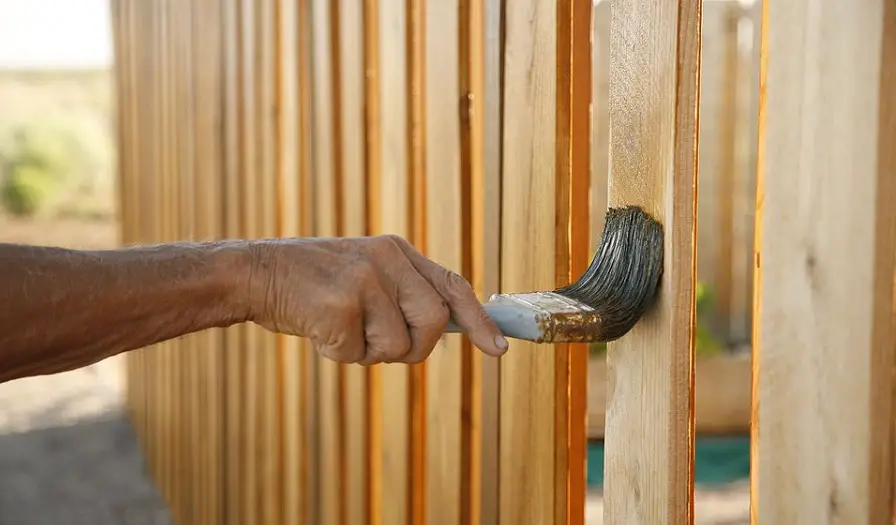
There is a type of wood that does not need special protection. This is treated and stabilised wood that is dimensionally stable. But it is much more expensive.
Bottom line:
- Use durable and rot-resistant wood. Wood containing oils, tannins or resins is recommended.
- Adopt constructive solutions that drain water from the base of the fence.
- Choose designs that don't let water puddle on the wood.
- Use protective materials that don't film - oil, wax - you'll find it much easier to maintain.
- Do not use totally transparent products because they do not protect against UV radiation.
I hope these tips will help you build strong and beautiful wooden fences. Good luck!





















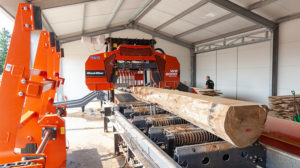
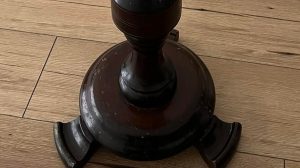
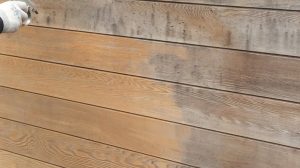

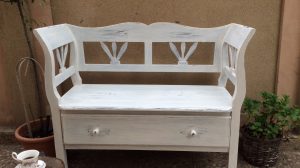
Add comment